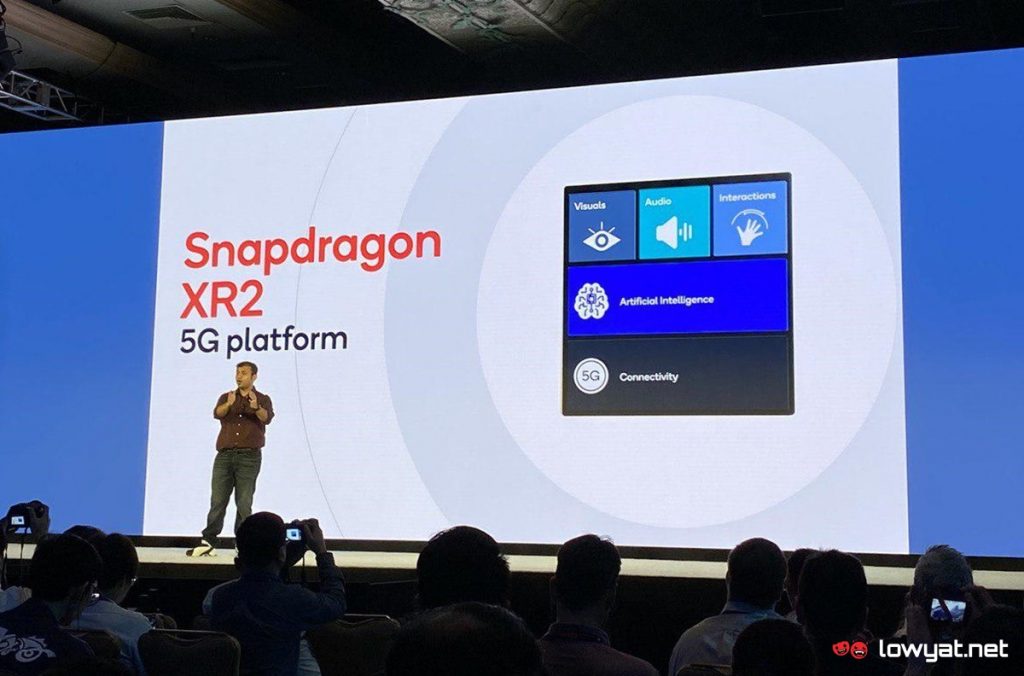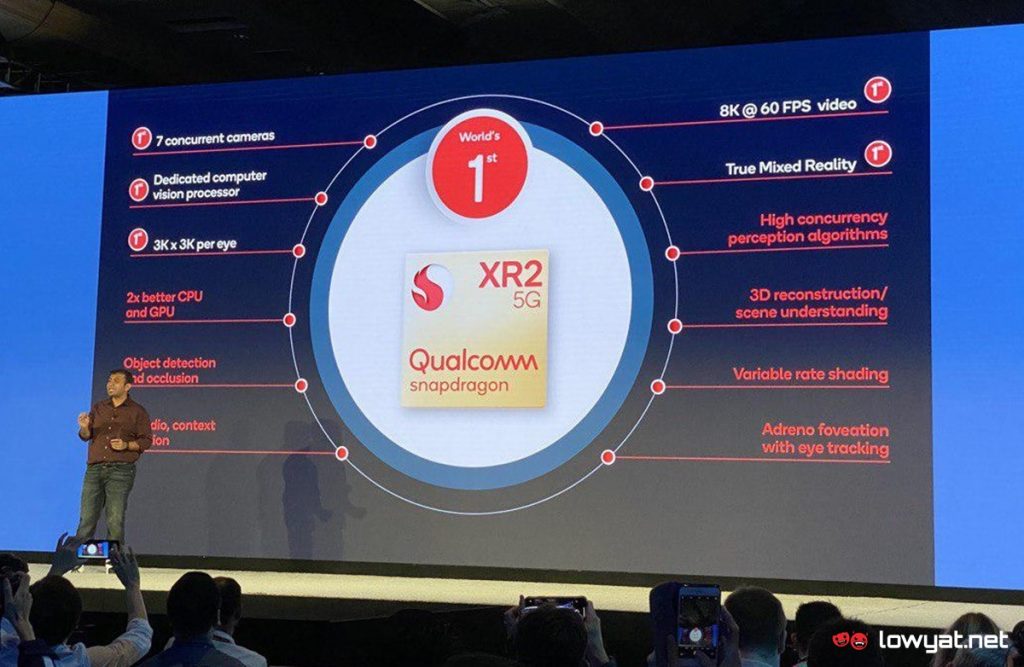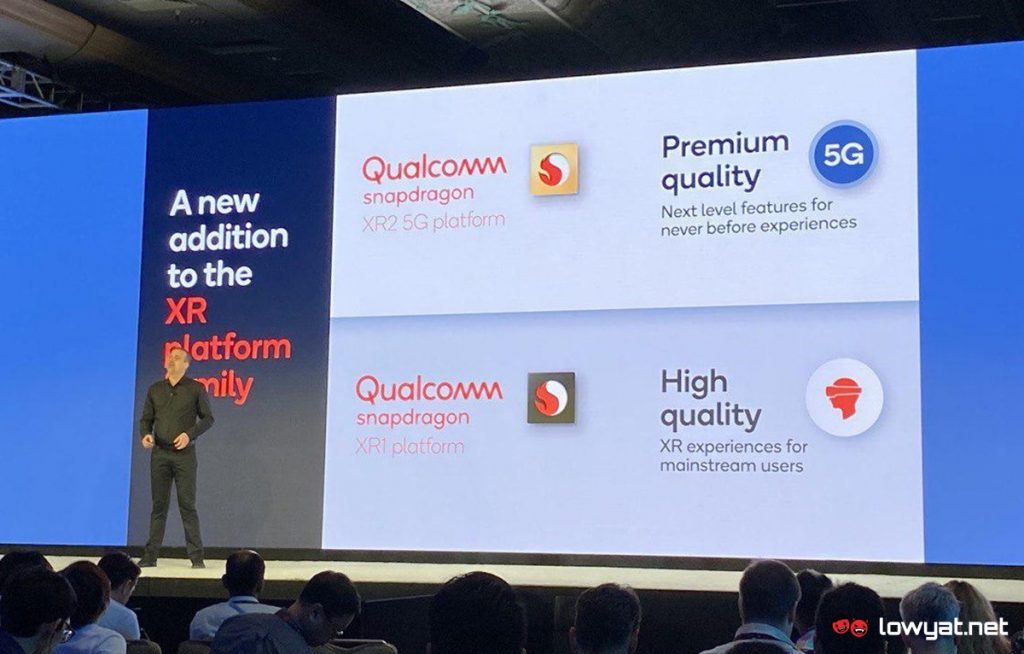This was done through the announcement of Snapdragon XR2 Platform which offers twice the CPU and GPU performance of Snapdragon 835 Mobile XR Platform. It also able to support 1.5x shade processing as well as 1.5x pixel and 3x texel rates.
The platform is also able to support resolutions of up to 3K by 3K per eye at 90 fps as well as 8K 360-degrees videos running at 60fps or 120fps if tuned down to 4K resolution. HDR10 and HDR10+ color processing is also supported by Snapdragon XR2. With the ability to support up to 7 concurrent cameras, the platform is designed to provide highly accurate head, lips, and eyes tracking as well as 26-point skeletal hand tracking. A custom-made computer vision processor also gives Snapdragon XR2 the ability to recognize scene, and 3D reconstruction.
Naturally, the platform also able to deliver 3D spatial audio which is important in order to provide good XR experience. An always-on, low power Hexagon DSP adds voice activation and context detection for the Snapdragon XR2. Not forget, the Snapdragon XR2 is also able to support 5G connectivity which make it good candidate for stand-alone mobile headsets of the future. Speaking about future, there is no exact release date for Snapdragon XR2 at the moment. However, given the nature of the platform which are meant to be adopted directly by OEMs, companies, and developers, it should be only a matter of time before we see a Snapdragon XR2-based headset making its debut in the market.
At the same time, Qualcomm will continue to produce Snapdragon XR1 as well which is now being positioned to deliver XR experience for the mainstream market.


